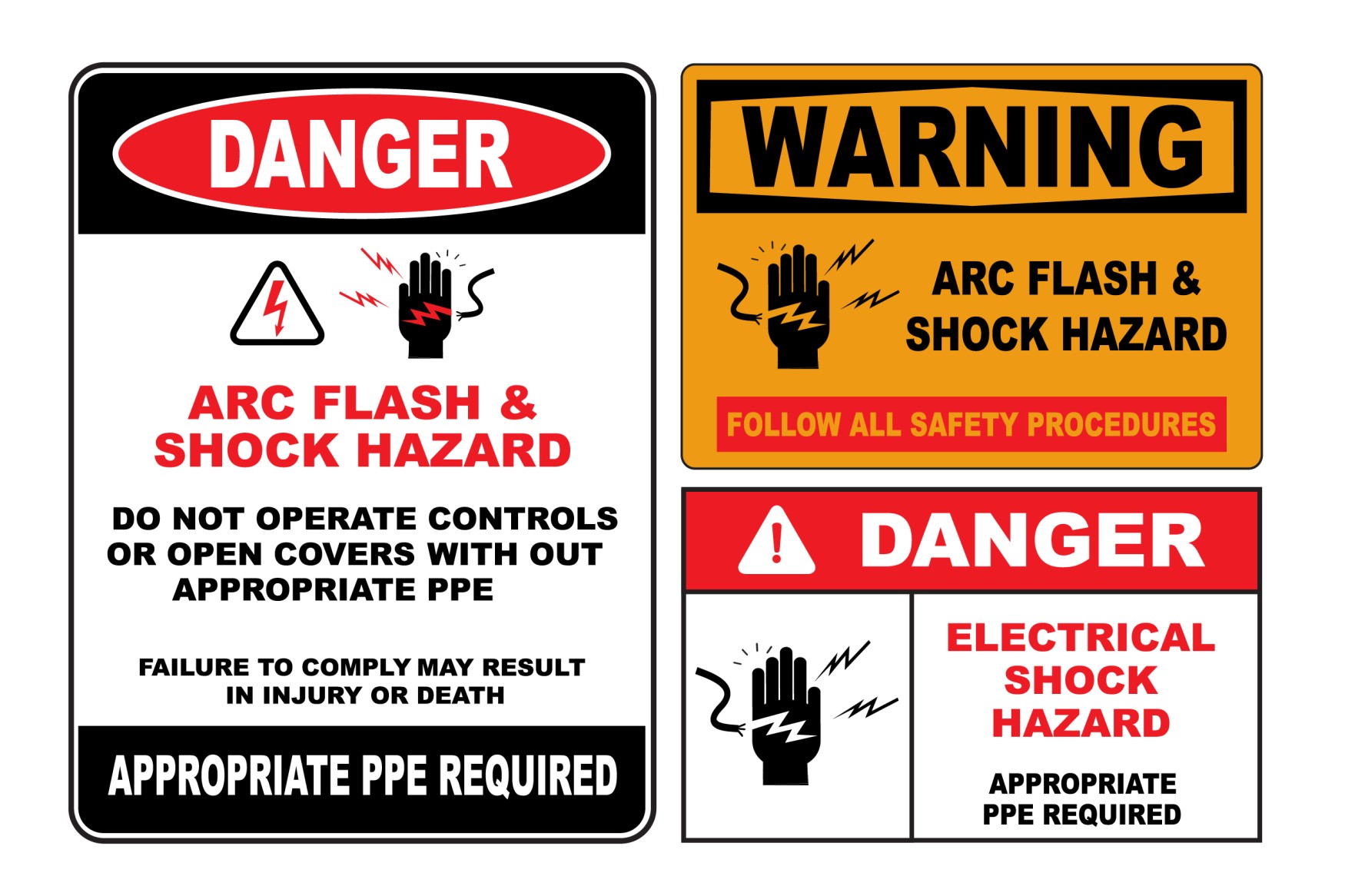
Although electricity is necessary to make modern life possible, it's also perilous when it's not contained. Exposure to high voltage wiring and circuitry can lead to injury and death, particularly for employees who work with electricity.
In 2019, there were 166 electrical fatalities and 1,900 nonfatal injuries. Both of these numbers were higher than in 2018, illustrating the growing need for proper workplace safety training and protective equipment.
Because electrical burns and injuries are relatively common, we're going to look at how to treat and prevent them on the job.
What is an Electrical Burn?
An electrical burn is often similar to a regular burn, except it's caused by an electrical current running through the body. The severity of the burn depends on several factors, including:
- The voltage of the electricity
- The duration of contact
- Whether contact was direct to the skin or through clothing (or other protective material)
Electrical burns can be mild or severe and, as noted, fatal. One of the primary reasons why electrical burns can be so dangerous is that the electricity can cause the body to seize in place. So, as long as the person stays connected to the power source, they won't be able to move. Also, electricity can surge through the body, causing damage and failure to internal organs like the heart.
Compared to incendiary burns that only affect the skin, electrical burns are much more serious and should be treated accordingly.
The Three Electrical Burn Types
There are three ways that workers can get injured by electricity. Here's a quick breakdown of each hazard:
- Electrical Burn - In this case, the burn happens from direct contact with an electrical source (i.e., a frayed wire). Electricity will flow through the body until the connection is severed.
- Arc Burn - Sometimes, electricity can create arc flashes, superheating the air and any items they touch. Workers can get burned by being close to an arc flash, even if the energy doesn't contact them directly.
- Thermal Contact Burns - As electricity flows, it heats various substances like metal. So, when individuals touch electrically charged devices, they can get burned because the item is so hot. These burns are much more similar to incendiary injuries.
How Does Someone Get an Electrical Burn?
The two primary methods of getting an electrical burn are either through an electric shock or an arc blast. Below are more details on how these situations can occur.
Electric Shock
Ideally, all electricity will flow through insulated circuits, meaning that workers will never be exposed to a live (i.e., exposed) wire. For an electric shock to happen, a person has to “complete the circuit”. This means that they have to connect both the positive and negative terminals.
Unfortunately, because electricity can pass through the human body pretty easily, workers can act as circuits themselves. Electricity will always try to travel to the ground via the path of least resistance. If an employee is touching a live wire, their tissue is often the least resistant substance.
In other instances, a worker may be touching both an electrical conductor (i.e., a wire) and a conductive material like metal. In this case, the person is a conduit for electricity to flow from point A (the conductor) to point B (the metal).
As we mentioned, the severity of electric shocks depends on several factors, such as the voltage, duration of contact, and how the electricity passes through the body. Direct contact with the skin will always yield more severe burns than if a worker was wearing protective equipment like gloves or a coverall.
Arc Flashes and Blasts
An arc flash occurs when a burst of electricity travels through the air to the ground. This effect is identical to a bolt of lightning. Typically, this happens when the air is already ionized, making it easier for the energy to move. Humid environments can ionize more easily since water is an excellent electric conductor.
Unfortunately, if a current is strong enough to create an arc flash or blast, the damage is often catastrophic. If any workers are close to an electrical arc, they will likely sustain severe injuries or even death. There are a couple of reasons why arc flashes are so deadly:
- First, the electricity will superheat the air, burning at up to 35,000 degrees Fahrenheit. So, even if the arc doesn't hit a person, the heat can substantially burn their skin. Protective equipment can mitigate this damage, but a worker can experience rapid heat stroke if the air is hot enough.
- Second, the flash can create a blast, which can equal the force of about 1,000 pounds. This blast can knock a worker down, as well as damage their internal organs from the impact. Blasts can also ignite flammable materials or cause devices to explode, sending shrapnel flying in all directions.
Which Industries Have the Highest Risk of Electrical Burns?
Some industries have a much higher risk of electrical shocks or arc blasts. So, workers in these industries must practice all safety protocols and regulations at all times. Wearing the proper personal protective equipment (PPE) can also help prevent burns and other injuries.
These occupations are most at-risk of electrical burns:
- Construction and Extraction Occupations - 43 percent of fatalities, 27 percent of nonfatal injuries
- Installation, Maintenance, and Repair Occupations - 22 percent of fatalities, 35 percent of nonfatal injuries
- Building and Grounds Cleaning and Maintenance - 17 percent of fatalities, a negligible percentage of nonfatal injuries
- Transportation and Moving - Seven percent of fatalities, three percent of nonfatal injuries
- Farming, Fishing, and Forestry- Four percent of fatalities, a negligible percentage of nonfatal injuries
- Production Occupations - 13 percent of nonfatal injuries, few (if any) fatalities
Looking at this data, it's interesting to see the difference between fatal and nonfatal injuries. For example, in construction, workers are unfortunately more likely to die from an electrical burn. By comparison, those in the maintenance and repair industry are more likely to become injured but not die.
Overall, the danger stems from working with heavy machinery or electrical equipment. Maintenance and repair technicians may come into contact with wires and circuitry all the time, so they have to make sure that they don't accidentally complete a circuit while working. For example, if a worker is fixing a machine, residual energy may cause an electrical shock.
How to Treat Electrical Burns
One crucial point to remember with electrical burn treatment is that the damage may not be readily apparent. Since electricity can damage internal organs, a person may look okay on the outside but have serious internal injuries. So, it's crucial to follow all treatment procedures, regardless of the situation. Here are the different steps to take:
Step One: Sever the Connection (if Safe to Do So)
The longer a person is connected to the circuit, the more damage will occur. In some cases, severing the connection is as easy as pulling the body away from the electric shock. In other instances, employees may have to switch off the power, such as with a circuit breaker.
That said, if doing this will cause injury to other workers, they should stay away. For example, if there is a high risk of an arc flash or if a second worker will be shocked by touching the first person.
Step Two: Call 911 or Other Emergency Services
Because most of the damage can be internal, employees are not qualified to assess whether someone is okay after an electrical shock. However, EMTs and paramedics can check vital signs to see if the injured person should go to the emergency room or not.
Step Three: Don't Move the Person Unless Necessary
Movement can put added stress on the body and organs, so injured individuals should stay in place as long as it's safe to do so. However, if they're at risk of getting another shock, workers should move them away from the power source or affected area.
Step Four: Look for Warning Signs
Minor electrical burns may not require immediate medical attention. However, if an injured person starts developing secondary symptoms, workers should call 911 immediately. These symptoms can include:
- Severe skin burns (i.e., blistered or bleeding)
- Confusion and disorientation
- Muscle pain and contractions
- Cardiac arrest
- Difficulty breathing
- Seizures
- Loss of consciousness
If workers are trained in CPR, they can administer treatment as long as the injured person is no longer in contact with the electrical source. Another critical point to remember is that a person's internal temperature may fall after an electrical burn, so workers should try to prevent them from getting too cold.
Safety Tips to Prevent Electrical Burns
Since arc flashes and electric shocks are the primary ways employees can get burned, everyone should follow safety practices to prevent exposed circuits. Here are some top tips:
- Require Electrical Safety Training - All workers and supervisors should attend training classes to understand the dangers of electricity and how to protect themselves and each other.
- Use safety signage – For areas with a shock or arc flash risk, make sure appropriate signage is present to alert workers of the danger and to ensure they are wearing the proper PPE.
- Use Nonconductive Materials - Plastic and rubber are terrible electrical conductors. Use these materials to insulate outlets and circuits whenever possible.
- Don't Overload Circuits - Workers should avoid using too many power strips and extension cords. Overloaded circuits have a much higher potential for flashing.
- Keep Electrical Panels Clear - There should be a minimum distance of three feet around all panels and breakers.
- Wear Protective Gear - All workers should wear the right protective equipment at all times. PPE should be rated as NFP70E, which is the minimum standard for electrical burn safety.

Get Your PPE From International Enviroguard
Workplace safety should always be a priority, so keep your employees safe with high-quality PPE from International Enviroguard. We have the best materials that can help prevent and mitigate the potential for electrical burns.